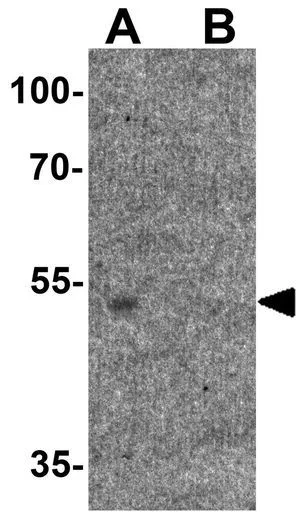
WB analysis of human brain tissue lysate in (A) the absence and (B) the presence of blocking peptide using GTX31924 HDAC1 antibody. Working concentration : 1microg/ml
HDAC1 antibody
GTX31924
ApplicationsWestern Blot, ELISA
Product group Antibodies
TargetHDAC1
Overview
- SupplierGeneTex
- Product NameHDAC1 antibody
- Delivery Days Customer9
- Application Supplier NoteWB: 1 - 2 microg/mL. *Optimal dilutions/concentrations should be determined by the researcher.Not tested in other applications.
- ApplicationsWestern Blot, ELISA
- CertificationResearch Use Only
- ClonalityPolyclonal
- Concentration1 mg/ml
- ConjugateUnconjugated
- Gene ID3065
- Target nameHDAC1
- Target descriptionhistone deacetylase 1
- Target synonymsGON-10, HD1, KDAC1, RPD3, RPD3L1, histone deacetylase 1, protein deacetylase HDAC1, protein deacylase HDAC1, protein decrotonylase HDAC1, reduced potassium dependency, yeast homolog-like 1
- HostRabbit
- IsotypeIgG
- Protein IDQ13547
- Protein NameHistone deacetylase 1
- Scientific DescriptionHistone acetylation and deacetylation, catalyzed by multisubunit complexes, play a key role in the regulation of eukaryotic gene expression. The protein encoded by this gene belongs to the histone deacetylase/acuc/apha family and is a component of the histone deacetylase complex. It also interacts with retinoblastoma tumor-suppressor protein and this complex is a key element in the control of cell proliferation and differentiation. Together with metastasis-associated protein-2, it deacetylates p53 and modulates its effect on cell growth and apoptosis. [provided by RefSeq, Jul 2008]
- Storage Instruction-20°C or -80°C,2°C to 8°C
- UNSPSC12352203

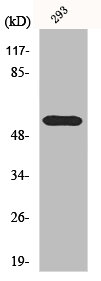
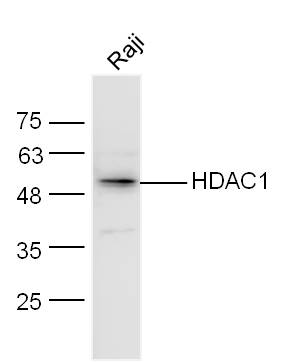

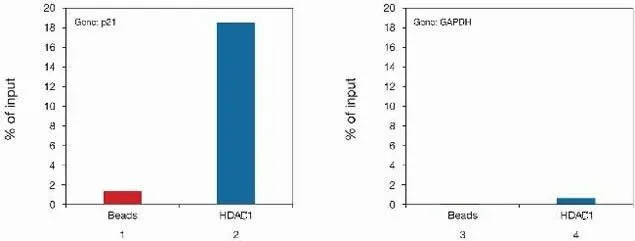
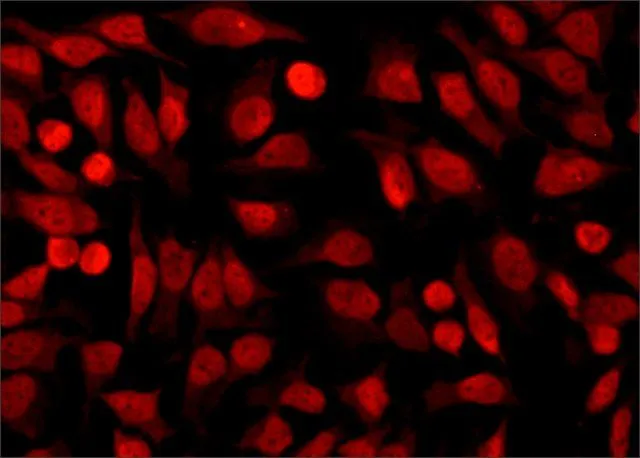

![IHC-P analysis of mouse brain tissue using GTX33988 HDAC1 antibody [4E1]. Negative control (the lower left coner) was secondary antibody only. Antigen retrieval : Sodium citrate pH6.0 was used for antibody retrieval (>98oC, 20min) Dilution : 1:200](https://www.genetex.com/upload/website/prouct_img/normal/GTX33988/GTX33988_20200622_IHC-P_121_w_23060801_638.webp)
